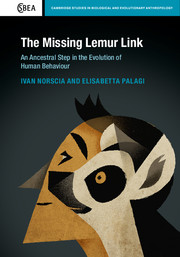Book contents
- Frontmatter
- Dedication
- Contents
- List of contributors
- A message from Jane Goodall
- Foreword
- Preface by the authors
- Acknowledgements
- Part I Communication: from sociality to society
- Part II How conflicts shape societies
- Part III Why lemurs keep in touch
- 7 Playing lemurs: why primates have been playing for a long time
- 8 Sex is not on discount: mating market and lemurs
- Part IV Closing remarks
- Looking back to the future – Michael Huffman
- Index
- References
8 - Sex is not on discount: mating market and lemurs
from Part III - Why lemurs keep in touch
Published online by Cambridge University Press: 05 May 2016
- Frontmatter
- Dedication
- Contents
- List of contributors
- A message from Jane Goodall
- Foreword
- Preface by the authors
- Acknowledgements
- Part I Communication: from sociality to society
- Part II How conflicts shape societies
- Part III Why lemurs keep in touch
- 7 Playing lemurs: why primates have been playing for a long time
- 8 Sex is not on discount: mating market and lemurs
- Part IV Closing remarks
- Looking back to the future – Michael Huffman
- Index
- References
Summary
If we understand particular exchanges as being the result of a particular social system…it may become clear why exchange is a powerful metaphor for social relationships and their transformation.
Sitta von Reden, 1998Biological (or pseudo-cultural?) market
It is well known that both Darwin and Wallace were influenced by the work of the economist and demographist Thomas Malthus (An Essay on the Principle of Population, published in 1797) while elaborating their theories on evolution. Probably, the mechanisms underlying the economic system are the outcome of an evolutionary process, which has acted on the biological system and reflects on our behaviour. The analogy between economical and biological systems is not limited to this example. In biology, as well as in economics and politics, power is a key concept for understanding asymmetric relationships between subjects (Dahl, 1957). Distributive power, derived from Russell's definition of social power (1938), focuses upon who has got the power over whom. It can originate from coercion, when an individual can force another to do something, or from leverage, when the use of force is not possible. Specifically, coercive power depends on fear, suppression of free choice and/or use of threat, for its existence. It is normally based on an imbalance of social, psychological and physical power between individuals. Examples of this kind of power are theft with violence to obtain valuable goods (Matsueda et al., 2006), bullying to aggressively impose domination over others (Rayner and Hoel, 1997) and rape (Thornhill and Thornhill, 1983; Emery-Thompson, 2009; Muller and Wrangham, 2009). Human, gorilla, chimpanzee and orangutan males perform sexual coercion over females to obtain forced copulations (Goetz and Shackelford, 2006; Muller and Wrangham, 2009). Wild orangutans provide one of the most dramatic examples of this phenomenon. It has been reported that in this species ‘most copulations by subadult males and nearly half of all copulations by adult males occur after the female's fierce resistance has been overcome through violent restraint’ (Smuts and Smuts, 1993, p. 6). Sexual coercion is also present in many other animals spanning invertebrates and mammals. It is worth mentioning, among others, that scorpion flies (Thornhill, 1980), guppies (Head and Brooks, 2006), salamanders (Ethan et al., 2006), snakes (Shine and Mason, 2005), mallards (Barash, 1977), bottlenose dolphins (Scott et al., 2005), and a huge variety of non-human primates (Smuts and Smuts, 1993) force their mates into sex.
- Type
- Chapter
- Information
- The Missing Lemur LinkAn Ancestral Step in the Evolution of Human Behaviour, pp. 219 - 244Publisher: Cambridge University PressPrint publication year: 2016

